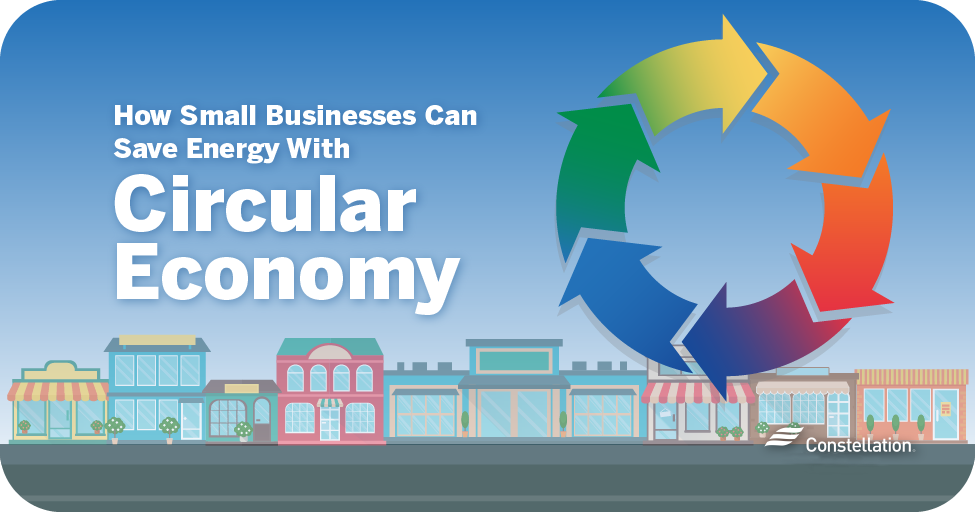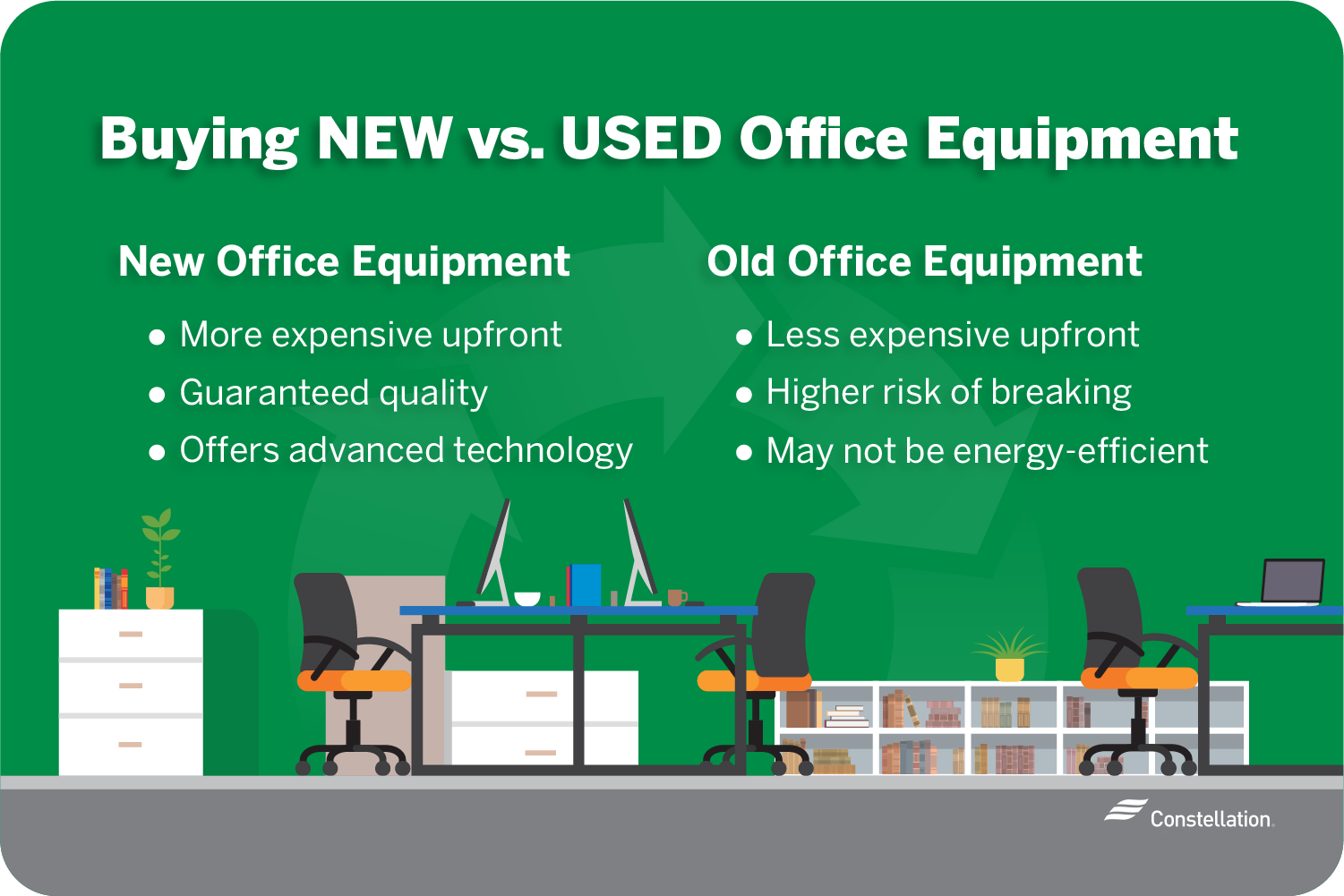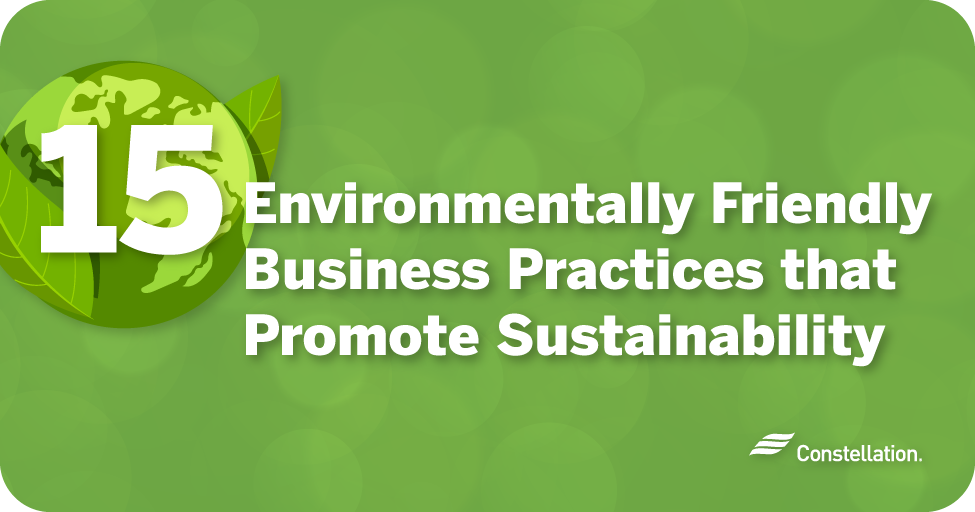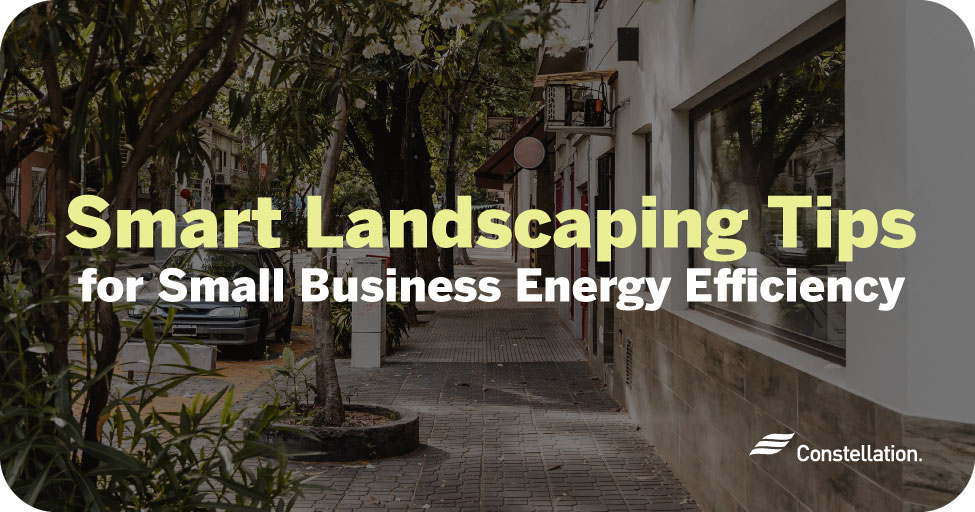
- Category:
Small Business Energy Savings - Published:
April 27, 2020 - Updated:
February 22, 2022
How Small Business Owners Can Save Energy with Circular Economy
The circular economy is a concept that’s increasingly gaining in popularity with small businesses that want to operate more efficiently. It’s a new economic model that leads to cost savings and efficiency and that’s also good for the planet. The importance of sustainability in business is driving this new mind-set. Indeed, one of the most attractive benefits of a circular economy is that it can improve your company’s bottom line.
What is a circular economy?

A circular economy is one that designs out waste and inefficiency at every step of manufacturing and use, that uses and reuses materials, and that closes the circle with regenerating resources.
In a circular economy, products are:
- thoughtfully designed to reduce waste and pollution, then
- manufactured, after which they’re
- distributed, then
- used and kept in use as long as possible through repair and remanufacturing, before eventually
- being recycled and finally
- fed back into the manufacturing process, where energy and raw materials are recovered and used to start the process over again.
The model of a circular economy stands in contrast to the traditional linear economy, where goods are manufactured from raw materials, sold, used and then thrown away, piling up in landfills or being burned and contributing to pollution. The circular economy is an innovative way of thinking about conducting business, from operations that employ thousands of workers to mom and pop stores.
What the circular economy means for small-business owners
As the benefits of switching to a circular economy model become more and more evident, the idea is increasingly being adopted by small businesses. The benefits exceed responsible environmental stewardship. They bring cost savings and operational efficiencies and affect how you run your business and how you invest in improvements and renovations. And by virtue of adding more and often cheaper options, taking a circular economy approach can remove stress throughout the whole process.
Renovating your small business in a circular economy
Making capital investments, like renovating your facilities or upgrading your office technology, is a great time to look at your circular economy options.
An easy place to start is what you do with used office furniture. Donating or recycling fixtures, furniture and equipment allows it to remain useful and stay out of the landfill. When replacing, you don’t have to choose between buying new and buying used. Refurbished and remanufactured equipment is a viable third option.
The benefits of remanufacturing equipment for a small business
Refurbished equipment is often as good as brand new. The difference between used and refurbished can be small in terms of quality — but huge in terms of cost. A refurbished item could be from an opened box but otherwise new. It might be missing its original power cord. It also could be certified reconditioned and inspected by the manufacturer. Remanufacturing involves replacing broken or worn parts with new ones but reusing those parts that remain in good condition.
The benefits of refurbishing and remanufacturing are considerable:
Get new technology without overspending.
Expect to pay a price that’s closer to what you would pay for used equipment rather than new. You could pocket the price difference or upgrade to equipment that you couldn’t afford new. The approach works for more than just buying office electronics. You could remanufacture an old desk to update its appearance and retrofit it with smart technology features.
Empower your employees to save energy.
Involve your employees in researching options and making choices. Engage them in choosing energy saving options and in outfitting their work spaces with smart technology. They can make a difference saving energy by using smart technology to control the equipment they use and monitor the energy they consume.
Conserve raw materials and reduce carbon emissions.
It’s good to know that when you choose remanufactured and refurbished office equipment and furniture, you’re saving resources that would have gone into manufacturing something new. Upgrading and refinishing a table takes dramatically fewer resources than manufacturing one from scratch. Saving trees is just the beginning. By refurbishing, you’re also preventing the waste of something that would otherwise be thrown away. These circular economy choices preserve raw materials and cut carbon emissions. Indeed, for small businesses concerned with LEED certification, remanufacturing equipment could be helpful.
When to buy new vs. used equipment for your small business
It’s impossible to have a perfectly circular economy. Things break and wear out that can’t be fixed. Sometimes buying new — especially technology upgrades like computers and large equipment — add so much productivity and efficiency that it’s worth the cost. In some cases, it would be an energy mistake not to buy new.

A careful consideration of the trade-offs will help you make the best decision.
When is buying used office equipment worth it?
Used office equipment and furniture can really stretch your budget. When buying office equipment and choosing new vs. used office equipment, consider how much use it will get, how long you hope it will last and how it looks. You can find used furniture that’s extremely well made — so much so that it may outlast and look better than some of your new options.
Your standards will vary depending on where and how you plan to use the furniture. A bookshelf in the break room doesn’t have to look as good as a conference room table, for example.
Hidden costs of buying used office equipment.
Buying equipment like laptops and printers used is more of a risk. Many vendors, like Best Buy, offer insurance that can protect you if the device breaks down. That reassurance can make buying used items tempting, but think twice when shopping for critical equipment.
Although insurance may cover the cost of replacement, don’t forget the hidden costs of lost data and lost time. Also, old equipment that isn’t energy-efficient or that doesn’t automatically shut down when idle can also rack up hidden costs.
What equipment should you buy new?
Sometimes, buying new equipment with the latest advances in technology is your best option. New equipment can be more energy-efficient and productive than even older equipment that has been repaired or modified.
For instance, a phone system that directly connects into systems like your CRM and gives workers omniscreen capabilities is worth buying (or leasing) new. With less downtime and a solid warranty, you’ll lower risks to capital and lost productivity.
If a device is truly essential to your business and its smooth operation, going cheap can turn out to be very expensive.
Adopting a circular economy mind-set can be done in increments. A great place to start is when renovating your small business. It can cut costs and ease choices, which can be a source of real stress. The circular economy gives you options that let you do more at every budget level. You can save energy while you transform your business to be more sustainable and eco-friendly.




